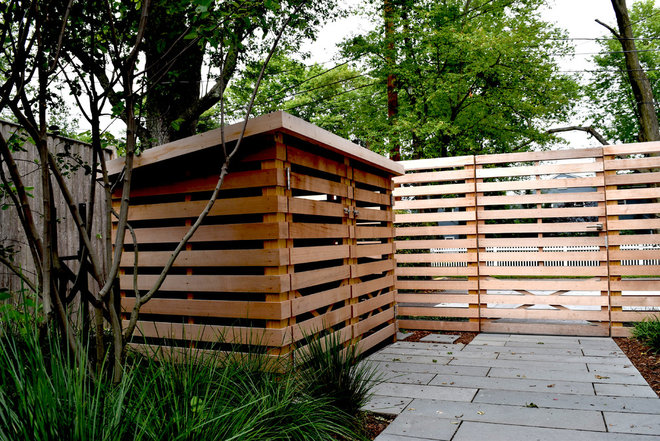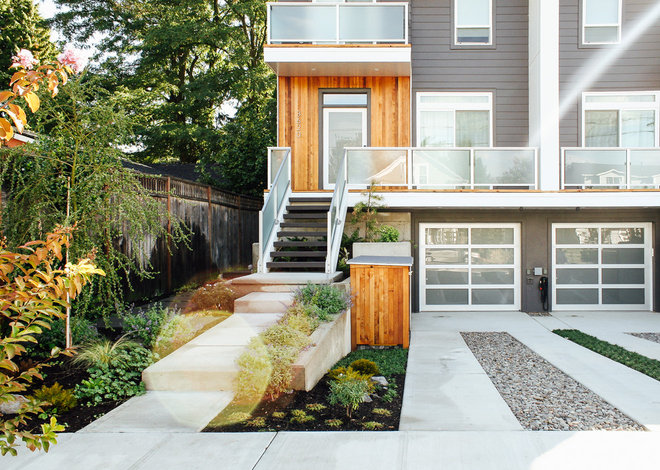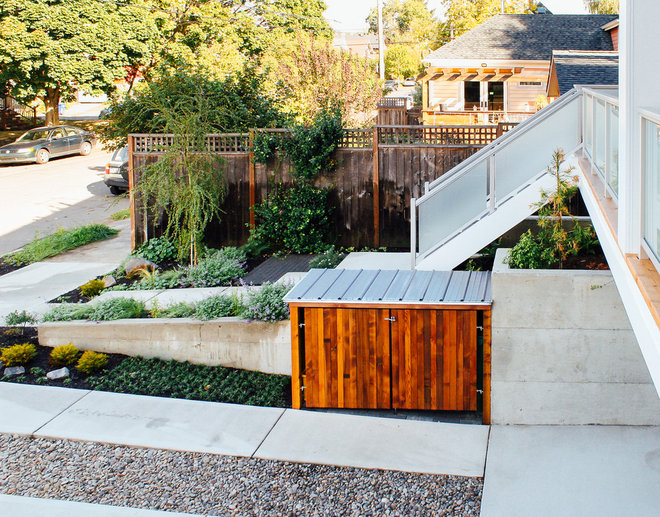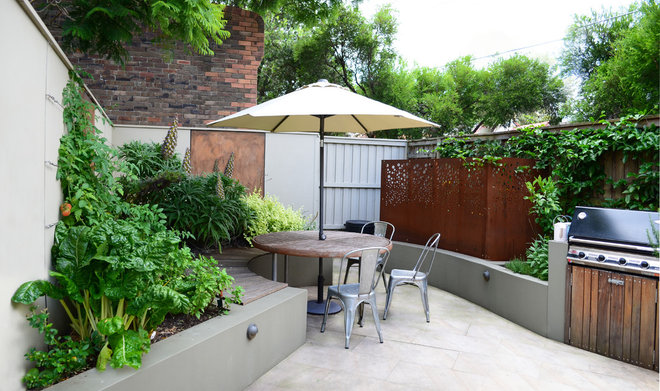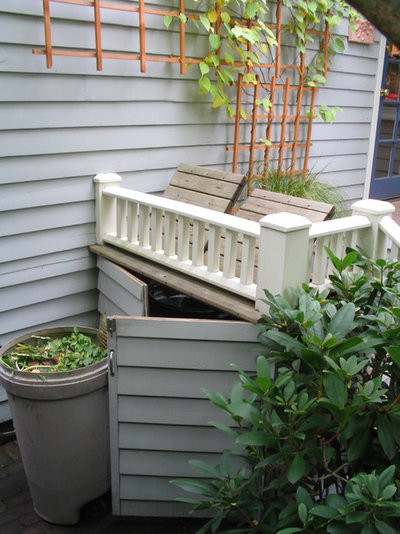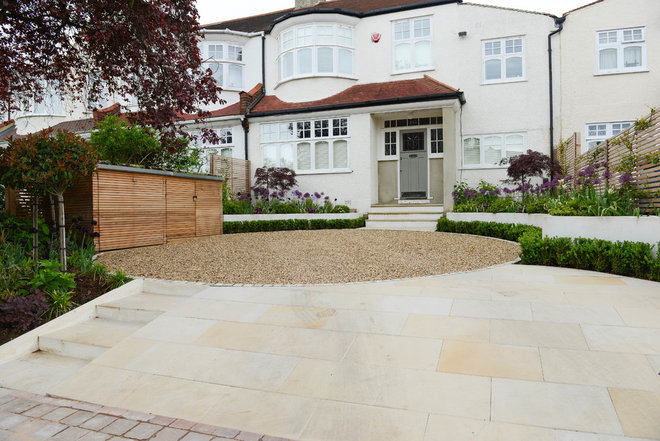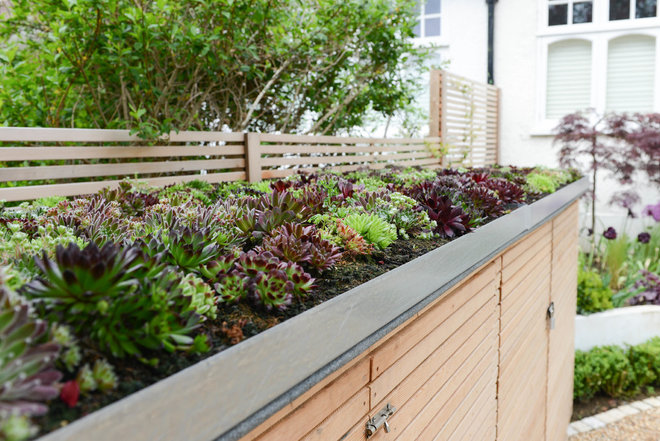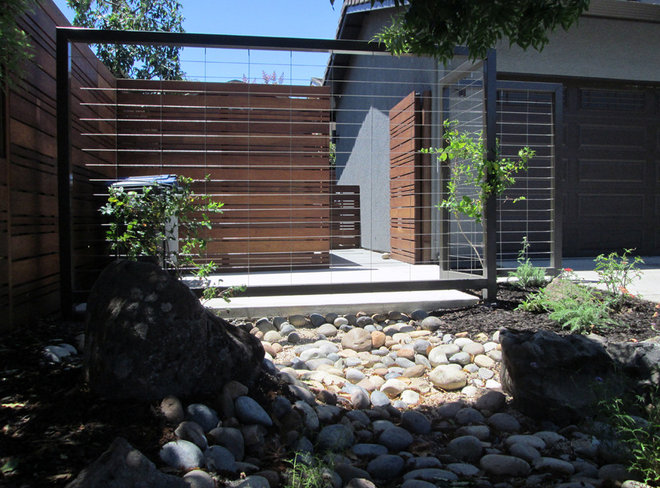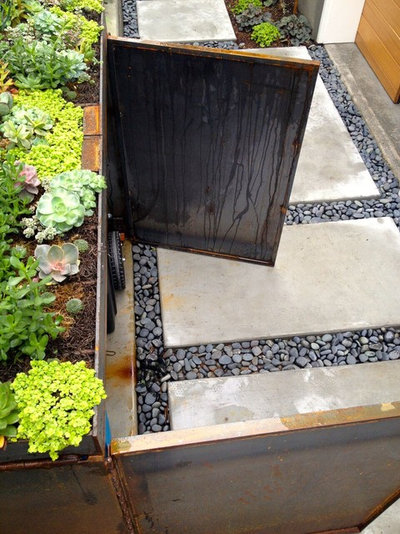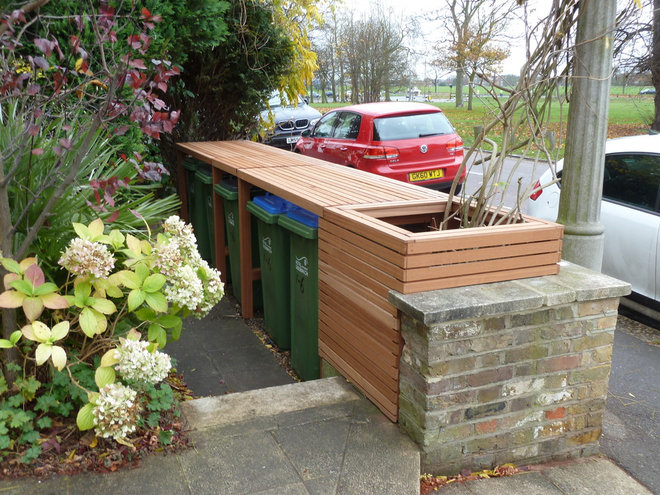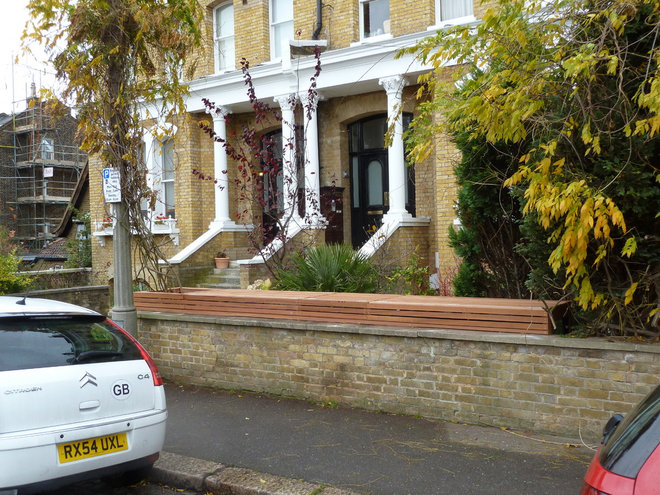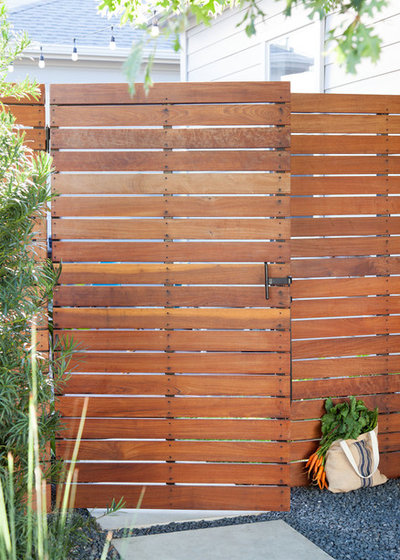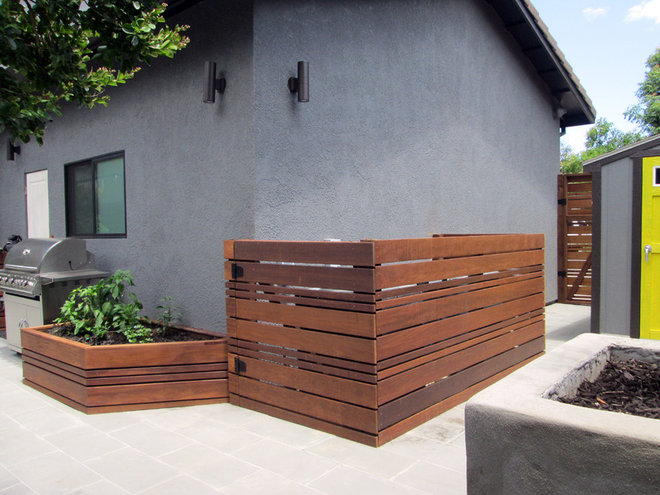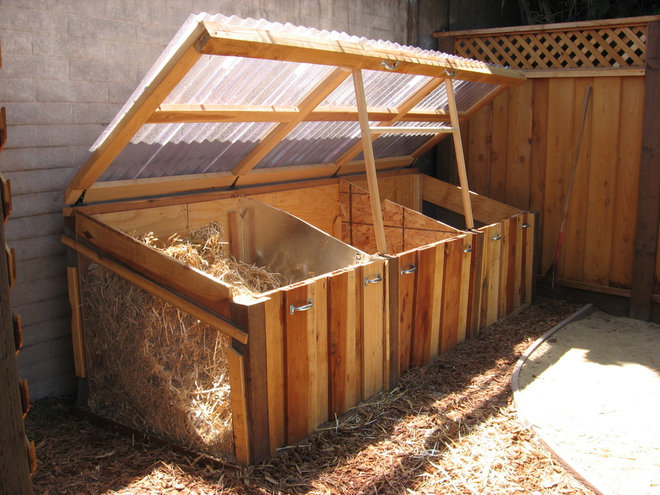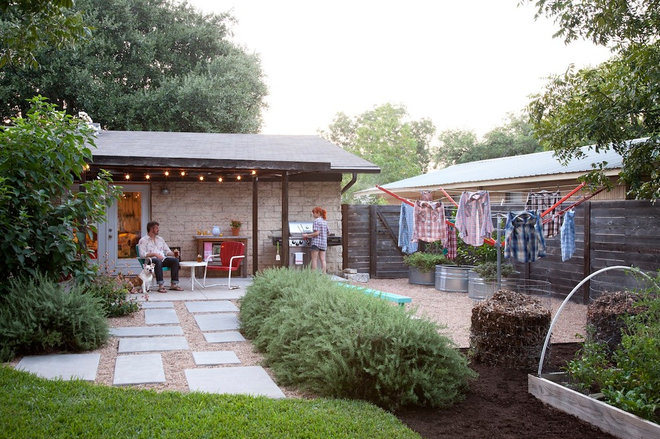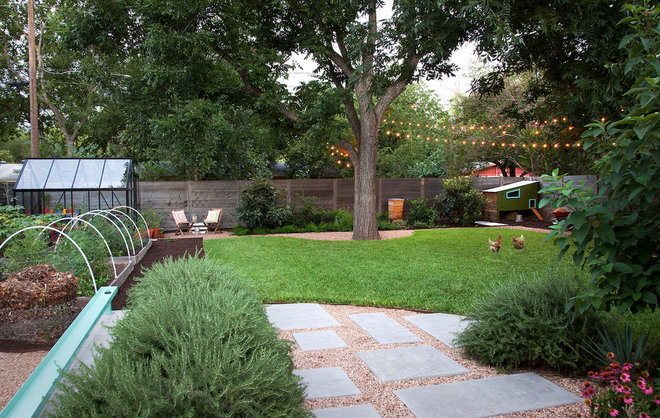12 Enclosure Ideas for Trash Bins, Compost Piles and AC Units
Keep reading to see how Houzz designers devised creative solutions for these less attractive but highly practical landscape elements, including concealing them behind a fence, enclosing them with a leafy screen or hiding them in the side yard.
An enclosure is a traditional solution for hiding bulky plastic garbage and recycling bins. This design in Boston by Michael D’Angelo Landscape Architecture gives the typical approach a modern twist with evenly spaced horizontal boards for both the bin enclosure and the fencing. The enclosure’s sloped roofline also would make it easy to lift the lid of a bin to add trash, recycling or green waste without needing to pull out the bin completely.
Find a landscape contractor on Houzz
When adding a structure to the landscape, it’s best to reference the home’s architecture by pulling in the style, paint color, rooflines and materials. If it’s done thoughtfully, something that could be an eyesore — say, garbage bin storage in the center of a front yard — can become an attractive asset to the overall look of the home.
At this duplex in Portland, Oregon, for example, the cedar used for the bin enclosure pulls the warmth of the wood down from the siding around the home’s entrance. Given the size and shape of the bin enclosure, it almost reads as if the wood siding was cut out of the front door section and transplanted to the ground-level bin storage.
A screen can be a space-saving strategy for concealing garden elements in tight quarters, as it can be positioned as close to the fence or as far away as needed to accommodate bins, bikes or garden tools. In this Sydney backyard by Outhouse Design, a custom laser-cut Cor-Ten steel screen separates the garbage and recycling bins from the seating area while providing an attractive backdrop.
If your entryway is elevated, put the area under the deck to good use by enclosing it with wood siding and shed-style doors. This design by Land2c Landscape Architecture for a home in Seattle incorporates a bench seat at deck level that can be conveniently opened to drop garbage or recycling straight into the open bins concealed below. While only a few steps from the back door, the bins are completely concealed from view and easy to access.
To help a shed for garbage and recycling bins read more as “garden” than “structure,” consider topping the enclosure with a living roof or planting vines to cover the exterior. In this London garden, designer Kate Eyre positioned the enclosure for the bins along the far side of an entryway courtyard. The thin, horizontal boards match the home’s fencing.
Surround a storage area with a trellis or wire fence, plant leafy vines and soon storage bins bikes or other equipment will be hidden from view. In this Mountain View, California, yard by Taproot Garden Design & Fine Gardening, a metal framework screens off the area for garbage and recycling bins from the driveway and street. Honeysuckle vines soon will cover the framework with fragrant blossoms and a leafy screen, masking both the sight and any odors from the garbage bins.
See 5 Unexpected Ways to Use Vines
If your home or garden aesthetic leans toward contemporary, consider using metal rather than wood to create a more modern bin unit. The designers at 415 Remodeling installed a steel enclosure in the side yard of this San Francisco home and added a living roof of mixed succulents and planters filled with evergreens and ornamental grasses to help soften the metal structure.
If you have a midheight wall close to the street, you’re nearly set for creating a concealed area for storing bins. Adopt a mixed-materials strategy, as was done for this brick-and-wood bin enclosure in an English front yard.
9. Fence Off Your Side Yard
Fencing off your side yard may seem like an obvious solution for hiding bins, rakes and other outdoor tools, so be sure to match the dimensions with what you’d like to store. Keep the length of fencing from the home to the gate long enough to conceal large plastic garbage and green waste bins even when the gate is open.
Make sure that the gate is wide enough to haul a bin through to the street and that it opens away from the bins, and consider a smooth floor surface for easy rolling. If you’d also like to store bikes or other equipment in this area, it could make sense to add a storage shed against the house in combination with a bin storage area.
Work with a fence installer in your area
An open-topped wooden enclosure makes for a smart screen for air-conditioning units outside this garden in Mountain View by Taproot Garden Design & Fine Gardening. The open slatting of the ipe wood and the lack of a roof ensure plenty of ventilation for the units while providing an attractive screen. The raised bed, made from the same wood, provides a growing spot for peppers and herbs.
If you have the space for it, installing a three-bin compost system can help turn a growing heap into a tidier system that is easier to manage. Generally speaking, a three-bin system works by always having compost going at different levels of decomposition. Fresh food scraps, garden clippings and leaf litter would be added to one bin, the middle bin would have scraps that are a little more decomposed, and the third bin would be filled with fully decomposed, ready-to-nourish-your-garden compost.
Urban Artichoke built this composting system for a San Francisco Bay Area client with a backyard edible garden. The bins are positioned along the back wall of the property, partially out of view and with easy access to raised beds.
Shop for a compost bin on Houzz
Don’t have room for a three-bin compost system? In this Austin, Texas, backyard farm designed by B. Jane Gardens, bins made of galvanized wire mesh corral leaf litter and garden clippings for a compost system that’s more organized than a simple pile. When compost is ready for adding to beds, one could tilt the lightweight mesh to shovel from the bottom.
